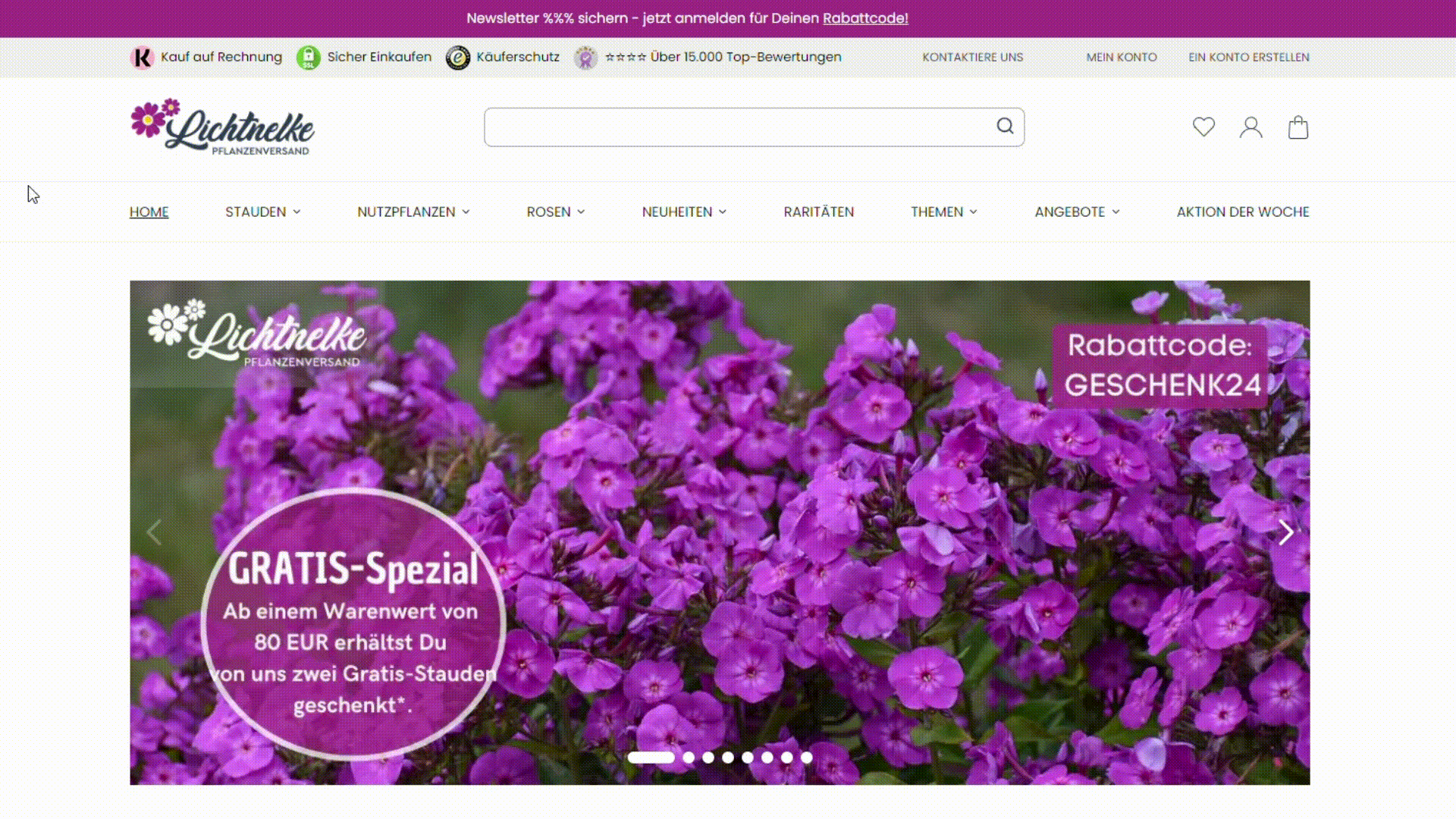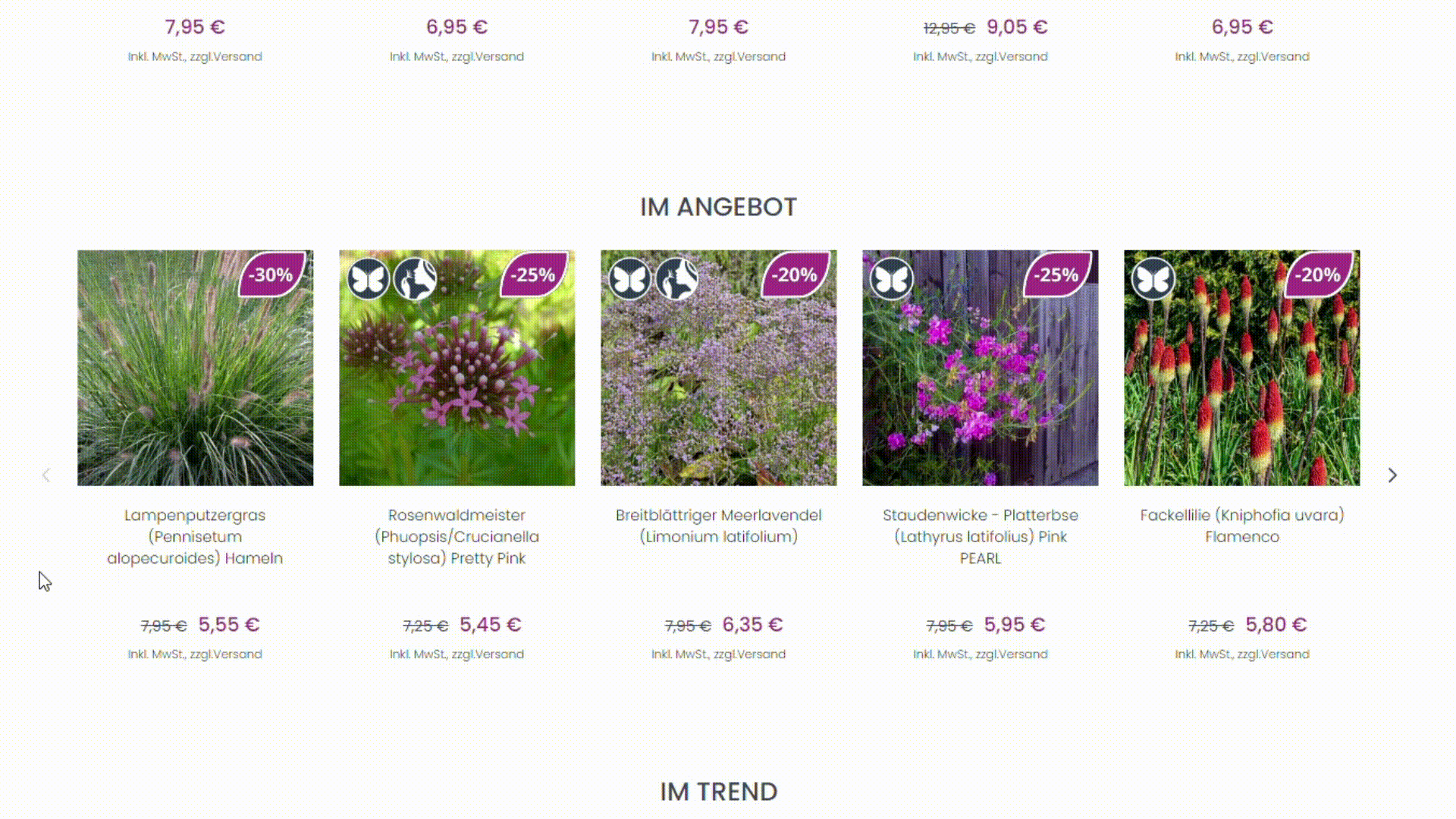Top Magento Ecommerce Design Tips for 2024:
Best Practices for a Successful Online Store

Top Magento Ecommerce Design Tips for 2024:
Best Practices for a Successful Online Store
Share post
Did you know it takes just 50 milliseconds for visitors to form an opinion about your site? First impressions are vital for converting organic traffic into leads. Additionally, 75% of visitors find well-designed websites more trustworthy, and say it influences their decision to engage with your brand. Read this article to discover the best Magento ecommerce design practices and make your online store prominent in a competitive market.
A well-designed online store not only attracts more visitors but also enhances their shopping experience, leading to higher conversion rate and customer retention. The right design can set your Magento store apart, making it easier for customers to navigate through pages, find products, and complete purchases effortlessly. By prioritizing elements such as aesthetics, usability, and mobile responsiveness, you ensure your store meets the expectations of modern consumers.
In the article, we’ll go over the key Magento tips that will help you create an attractive, user-friendly, and effective Magento 2 ecommerce website design. Let’s start with the first important aspect which is visual appeal.
Table of Contents
ToggleCreating an attractive and visually appealing Magento ecommerce business site is just the first step. It’s equally important to ensure that your design choices reflect and preserve your brand identity. This consistency helps build trust and recognition among your customers, reinforcing your brand’s presence in the market. Let’s delve into how you can maintain brand identity within your Magento ecommerce design.
Maintaining a strong brand identity in your Magento site design is essential for building customer loyalty and differentiating your store from competitors. Your brand identity encompasses elements like logos, color schemes, typography, and overall design style. Here’s how you can ensure your online store reflects your brand.
1. Consistent use of brand elements:
2. Design customization:

3. Visual content:
Let’s take a look at examples of how the use of various visual elements helps to reflect the philosophy of the brand.
The Visio brand’s philosophy is that advanced technology can be simple and user-friendly. It is reflected on the company’s website by combining bright colors with elegant fonts and intuitive navigation.

At the same time, OM System’s website focuses on dynamic photography and bold typography that conveys a passion for capturing life in its various forms.

By focusing on the above principles, you can build a Magento site design that not only looks great, but also reinforces your brand identity, helping you attract and retain loyal customers.
Staying updated with the latest visual trends can give your Magento ecommerce website design a modern and appealing look, helping to attract customers and make them interact with your store more. Here are some of the top visual trends for 2024 that you should consider. However, keep in mind that before using any trend, it’s better to first analyze your target audience and make sure these trends correspond with their tastes and needs.
Gradients add depth and attractiveness to your website. Gradients also help to make backgrounds, buttons, and other elements more visually appealing.
How to implement? Use gradients in your hero images, banners, and call-to-action buttons. Tools like CSS Gradient can help you create custom gradients that match your brand colors.
Who successfully uses it? The hero image on QuestMark’s website has a gradient color transition that draws the attention of site visitors.
Who shouldn’t use the trend? Luxury brands, such as high-end jewelry stores, which often rely on more sophisticated, minimalistic, and elegant designs.
High-quality artistic photos can create an emotional connection with your audience, making your products more desirable.
How to implement? Invest in professional photography that highlights your products in unique and creative ways. Use these photos across your Magento 2 site, including product pages, blogs, and social media.
Who successfully uses it? Gertrude Hawk Chocolates website uses high quality, artistic photography that whets the appetite and makes you want to buy sweets here and now.
Who shouldn’t use the trend? Artful photography might not be necessary for everyday household items where clear, straightforward images are more effective.
A minimalistic Magento site design reduces clutter, making it easier for customers to focus on your products and navigate through your site.
How to implement? Use ample white space, simple color schemes, and clean lines. Limit the number of elements on each page to only those necessary for a more straightforward user journey.
Who successfully uses it? Omega watches site, made on Magento platform, exemplifies minimalism with its clean layout and focus on product imagery, reflecting the brand’s ethos of simplicity and functionality.
Who shouldn’t use the trend? Minimalism could be less effective for brands in the entertainment industry that thrive on bold, dynamic visuals to attract attention.
Bold typography can draw attention to important messages, such as sales promotions or product highlights.
How to implement? Choose bold fonts for headings, subheadings, and call-to-action texts. Ensure readability by balancing bold text with plenty of white space.
Who successfully uses it? Harts of stur Magento website uses bold fonts to highlight sections, making it easier for users to find the information they need.
Who shouldn’t use the trend? It may clash with industries that value subtlety and professionalism, like financial services or legal firms.
3D elements and custom illustrations can make your site stand out and convey complex information in an engaging way.
How to implement? Use 3D models for product views or custom illustrations for storytelling on your Magento home page design and product pages.
Who successfully uses it? Heal’s uses a 360° product view to allow customers to see every angle of their products, creating an immersive shopping experience.
Who shouldn’t use the trend? Magento websites focused on essential goods, medical products, or professional services should avoid using 3D elements. For example, an online pharmacy or medical supplies store prioritizes clarity, trustworthiness, and ease of navigation. Overly stylized 3D elements and illustrations could distract from the important information, such as product details, instructions, and medical disclaimers, and might also make the site seem less professional or credible.
Consequently, choosing trends that align with your brand’s identity ensures a cohesive and authentic user experience, enhancing your site’s overall effectiveness.
Improving the UX on your Magento ecommerce website design is essential for keeping visitors engaged and encouraging them to make purchases. A seamless and intuitive UX not only enhances customer satisfaction but also boosts the conversion rate. By focusing on key UX elements, you can create a shopping experience that is both enjoyable and effective, leading to higher customer retention and increased sales.
Let’s explore some strategies for improving UX.
The higher user engagement on your Magento site is, the better it is for ensuring customer satisfaction and driving conversions. Here are key strategies to achieve these goals.
Slow-loading pages frustrate users and increase bounce rates. Optimize your images, leverage browser caching, and use a content delivery network (CDN) to ensure your website loads quickly. If you don’t want to waste time delving into these technical details, we suggest using our Magento speed optimization services. We’ll ensure your site has fast-loading pages that keep users engaged and encourage them to explore more products.
Organize your Magento site’s menu logically, use clear labels, and ensure that important categories and products are easily accessible. Implement a search bar with autocomplete functionality to help users find what they need quickly. A well-structured site reduces frustration and keeps users engaged.
A complicated checkout process can lead to cart abandonment. Streamline the checkout process by minimizing the number of steps, offering guest checkout options, and providing multiple payment methods. Ensure that forms are easy to fill out and provide clear instructions. A simple, efficient checkout process can significantly increase your conversion rates.
Use high-quality images, interactive videos, 360-degree product views, and detailed descriptions to showcase your products. Captivating visuals and informative content help users make informed purchasing decisions.
Incorporating customer reviews, ratings, and testimonials builds trust and credibility with potential buyers. Featuring user-generated content, such as photos and videos of customers using your products, can also create a sense of community and authenticity. Additionally, showcasing any awards, certifications, or endorsements your brand has received reinforces your reputation and assures customers of your product quality. Social proof elements are powerful tools for influencing purchasing decisions and fostering brand loyalty.
Utilizing these aspects, you can create a user-centric ecommerce site that keeps visitors engaged and drives higher conversions.
Personalize the shopping experience by recommending products based on user behavior, preferences, and purchase history. By tailoring the shopping experience to individual preferences of your potential customers, you can make them feel valued and engaged. Here are key aspects to focus on:
These features may help you create a more engaging and personalized shopping experience for your customers. This not only boosts customer satisfaction but also drives higher sales and brand loyalty.
SEO is critical for improving your store’s visibility on search engines and attracting more organic traffic. Here are essential strategies to enhance your store’s SEO.
Conduct thorough keyword research to identify terms your target audience is searching for. Integrate these keywords naturally into your product descriptions, titles, meta tags, and alt text for images. Ensure that each product page has a unique and descriptive meta title and meta description, as these elements are crucial for search engine ranking and click-through rates. Remember that keywords are your best friends to build your Magento website for search engines in the best way possible.
Google and other search engines consider page load speed as a ranking factor. Faster websites are more likely to rank higher in search results, improving visibility and attracting more organic traffic.
Regularly add high-quality, unique content that provides value to your customers. This can include blog posts, product reviews, buying guides, and “how-to” articles. Optimized content increases your store’s authority among the competitors, improves your ranking, thus helping you attract more organic traffic.
Develop a strategy to earn high-quality backlinks from reputable websites. Backlinks act as votes of confidence for your site, signaling to search engines that your content is valuable and trustworthy. Participate in industry forums, guest blogging, and collaborate with influencers to build your backlink profile.
By prioritizing these SEO practices, you can significantly enhance your Magento store’s visibility on search engines, attract more organic traffic, and ultimately drive higher sales and conversions.
According to statistics, in 2024, 72% of sales on ecommerce platforms worldwide come from mobile devices. So, adopting a mobile-first approach can significantly enhance the user experience and drive conversions. Here are key strategies for optimizing your store’s mobile experience.
Make sure your online store is designed to adapt seamlessly to various screen sizes and devices. A responsive design automatically adjusts the layout, images, and content to fit any screen, providing a consistent and enjoyable shopping experience whether your customers are using smartphones, tablets, or desktop devices.
Optimize your images by compressing them without compromising quality and use modern formats like WebP. Reduce the size of your content and use lazy loading for images and videos to improve website speed.
For instance:
Design touch-friendly elements, such as larger buttons and links, to accommodate users on touch-screen devices. Make sure that all interactive elements are easily tappable. This reduces user frustration and improves overall usability.
Regularly test your Magento store on different devices and screen sizes to make sure your site works smoothly on any device. Use tools like Google’s Mobile-Friendly Test to identify and fix any issues that may affect mobile performance.
Using these strategies, you can soar the mobile shopping experience on your Magento marketplace or another type of store, meeting the expectations of today’s mobile-savvy consumers and driving higher engagement and sales.
Using marketing features in your Magento ecommerce design can significantly boost customer engagement and drive sales. Below are examples of marketing features and Magento tips that can be quite quickly implemented in an online store design.
By strategically implementing following techniques, you can drive traffic, boost engagement, and ultimately increase conversions.
Include a clear and visible call-to-action (CTA). Strong CTAs guide customers through their shopping journey, encouraging them to take desired actions, such as adding items to their cart or signing up for newsletters. Verify that CTAs are prominently displayed and use compelling language that creates a sense of urgency or excitement.
Add product videos. High-quality product videos provide customers with a detailed view of your products, showcasing their features and benefits in a way that images alone cannot. Videos help customers to ensure that the product is right for them and increase conversion rates. Keep in mind that Magento allows easy integration of video content directly on product pages.
Integrate social platform blocks. Integrate social media feeds and share buttons to boost your store’s visibility and engagement with the brand. Social proof, such as user-generated content and customer reviews, can build trust and encourage potential customers to make a purchase. Magento offers extensions for integrating social media platforms seamlessly. For example, Social Login by Webkul Software Private Limited and Social Share by Ulmod.
Magento’s vast library of extensions offers unparalleled flexibility and functionality for your ecommerce store. By integrating the right tools, you can significantly enhance your site’s performance, user experience, and marketing efforts.
Below are some essential Magento features to consider adding to your store.
By utilizing these marketing techniques and third-party extensions, you can create a more engaging and effective ecommerce site that attracts and retains customers, ultimately driving higher sales and business growth.

While designing for Magento ecommerce stores, it’s essential to avoid common pitfalls that can undermine your site’s effectiveness and user experience. Here are key missteps to avoid, to ensure your website remains functional, attractive, and user-friendly.
If you don’t add text descriptions to your product cards, customers may be left unsure of the details and benefits of your products. While images and videos are vital, they can’t always convey all the necessary information. A well-designed text description provides important details such as features, specifications, and benefits, helping customers make informed purchasing decisions. Keep your product descriptions clear, concise, and informative to improve customer understanding and increase conversions.
In addition, product descriptions play a crucial role in on-page SEO by incorporating relevant keywords that help search engines understand the content and purpose of the product page. Well-crafted descriptions that include keywords naturally can enhance the page’s visibility in search engine results, leading to higher organic traffic.
Overloading your website with moving elements like animations, auto-playing videos, and flashy graphics can distract and overwhelm visitors. Moreover, these elements slow down your site, affecting user experience and SEO rankings. Use animations sparingly and ensure they enhance, rather than detract from, the user’s shopping journey.
Customers need clear feedback that their actions have been successful. Always provide a confirmation message or a visual cue when items are added to the cart to enhance the shopping experience and reduce abandonment rates.
Absence of customer reviews, testimonials, and ratings can make your site seem less credible and trustworthy. Social proof builds trust and influences purchasing decisions. It shows potential customers that others have had positive experiences with your brand. Ensure you prominently display social proof elements to enhance your brand’s credibility and encourage more sales.
By avoiding these design missteps, you can ensure your Magento ecommerce store remains user-friendly, visually appealing, and effective in driving conversions.
We’re done with the theory, now let’s move on to an example of a good Magento ecommerce website design. We are going to look at the recent design changes made by the Whidegroup team for Lichtnelke, ecommerce store selling plants.
Here are some of the principles we used when providing Magento design services for this store.





Such seemingly simple design decisions have already had a positive impact on website traffic and sales. Simplifying the layout and increasing the visual appeal made it easier for users to find relevant products and related items, which led to increased engagement and higher conversion rates.
Thanks to the strategic placement of call-to-action buttons and the use of intuitive design elements, customers now enjoy a smoother shopping experience, which directly contributes to increased sales efficiency. For example, after our little magic with product pages and carousels, sales in June 2024 increased by 5% compared to June 2023.

Magento ecommerce design involves creating and optimizing an ecommerce site using the Magento platform. It includes layout design, user interface (UI) enhancements, user experience (UX) improvements, and incorporating branding elements to ensure a cohesive and engaging online store.
Key design elements include a responsive and mobile-friendly layout, clear and intuitive navigation, high-quality product images and descriptions, consistent branding, and optimized loading times. Effective use of calls-to-action (CTAs) and incorporating customer reviews and social proof are also essential.
SEO is critical for improving your store’s visibility on search engines, driving organic traffic, and increasing sales. Important SEO practices include optimizing product descriptions and meta tags with relevant keywords, ensuring fast page load times, and creating high-quality, unique content along with attractive web design. Magento’s built-in SEO features, like customizable URLs and sitemaps, are valuable tools for enhancing your site’s ranking.
Design patterns in Magento refer to reusable ecommerce solutions to common design problems. These patterns can include standardized layouts for product pages, checkout processes, and navigation menus. They help streamline development and ensure consistency across the site, improving both functionality and user experience.
Magento customization involves modifying the default Magento functionalities to better fit specific business needs. Custom Magento themes can include changing the look and feel of the website, adding custom features, integrating third-party extensions, and tailoring the user experience to align with your brand and business objectives.
While basic customizations, such as changing theme templates and adjusting settings, can be done without extensive coding knowledge, more advanced customizations typically require the expertise of a developer. Hiring a professional Magento developer guarantees that required customizations are effectively implemented and do not negatively impact the site’s performance or security.
In the rapidly evolving world of ecommerce, staying ahead of Magento ecommerce design trends and best practices is pivotal to the success of your Magento store.
By following these design principles and avoiding common mistakes, you can create an attractive, efficient, and successful Magento ecommerce store. However, keep in mind that even the best design needs to be regularly refined to keep up with changing ecommerce trends and consumer expectations.
If you are not interested in digging into the intricacies of modern website design, contact Whidegroup for advice. Our specialists will provide you with individualized recommendations and expert assistance in adapting your Magento store to your unique needs.
Share This Article

 22 Most Common Magento 2 Issues: How to Fix Frequent Magento Errors
22 Most Common Magento 2 Issues: How to Fix Frequent Magento Errors
The bottom line in ecommerce? Get people to buy. Turning window shoppers into paying customers is where the magic happens. It’s a balancing act between science and art, and that’s where the ecommerce professionals and design wizards come in. Contact us and we’ll do the trick! Anastasia Zhuk, Ecommerce Consultant at Whidegroup